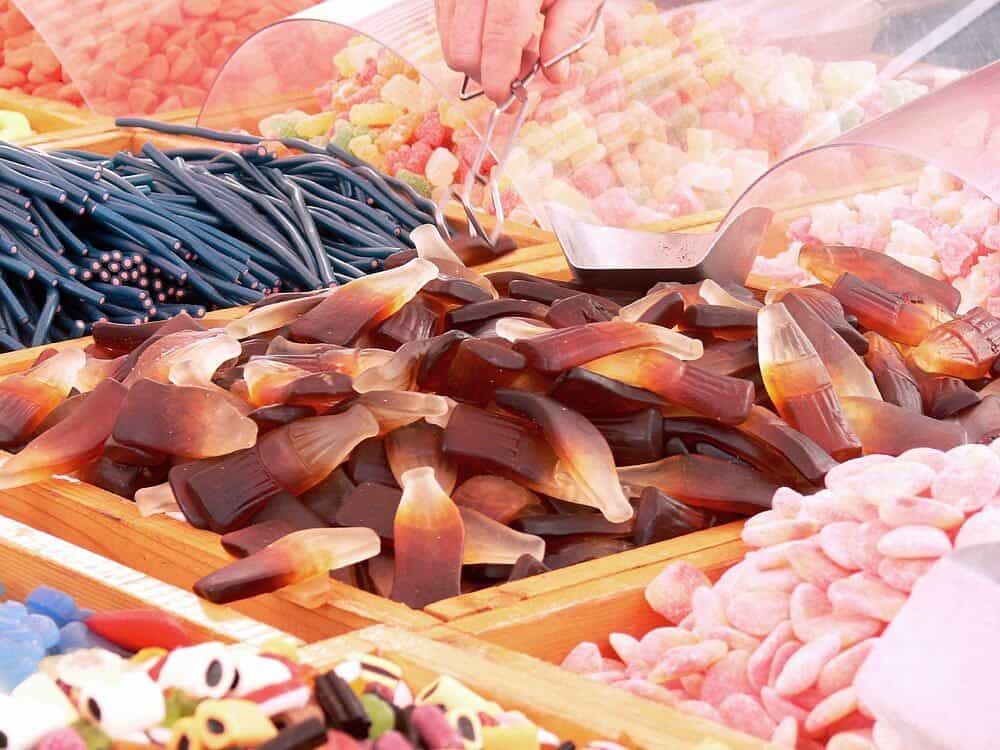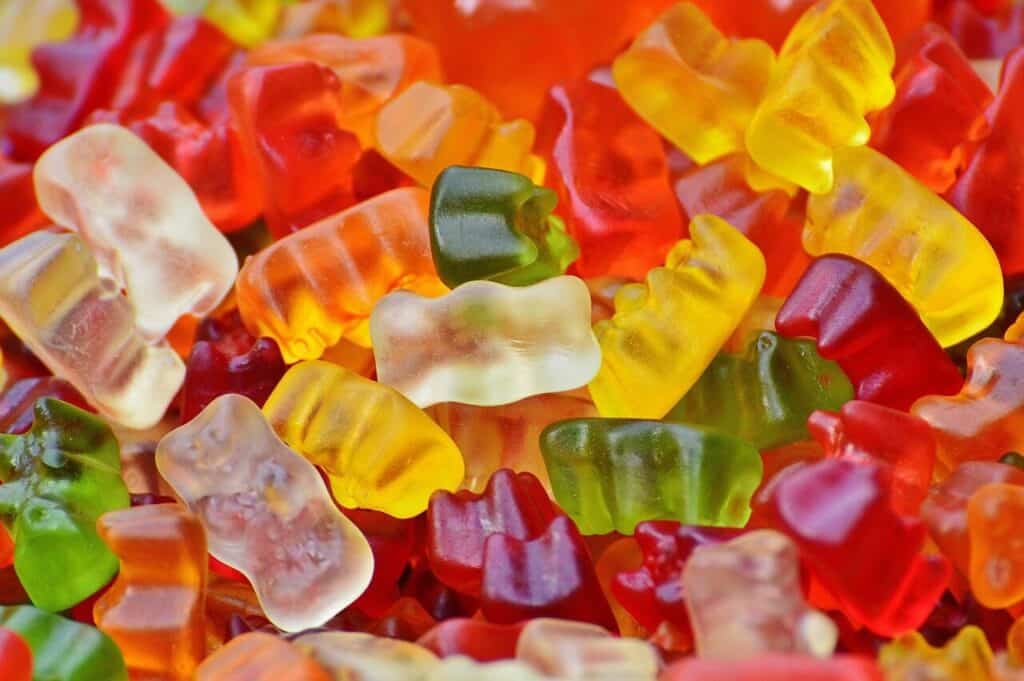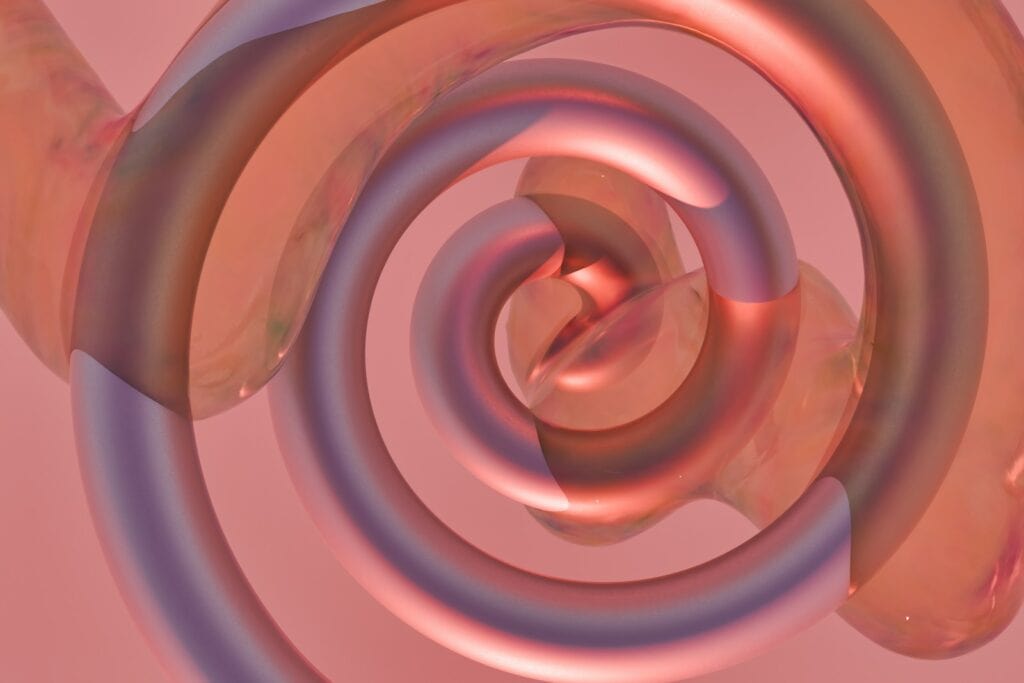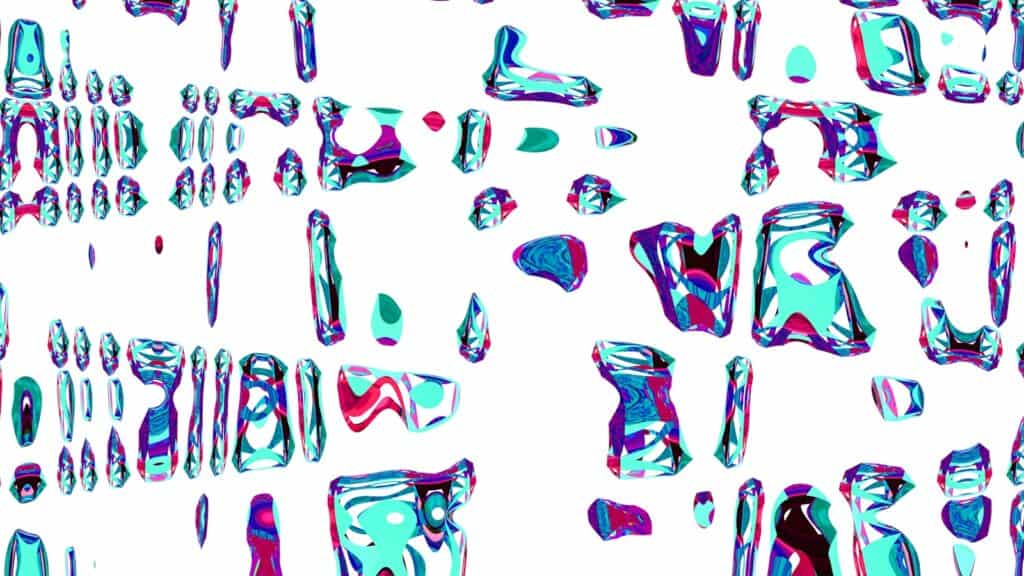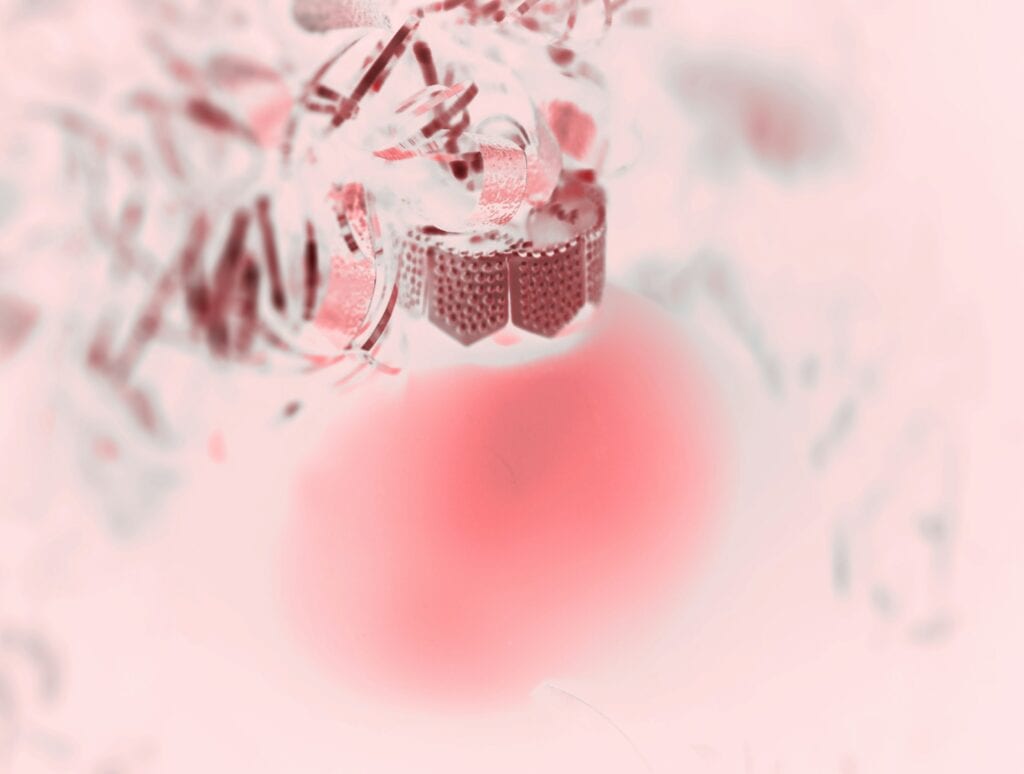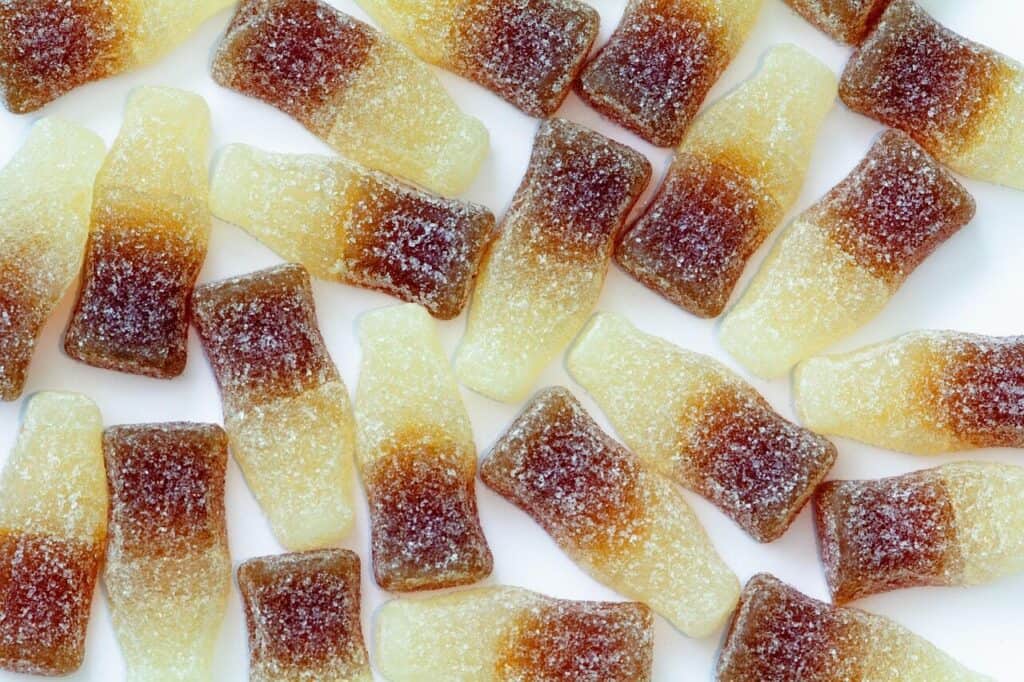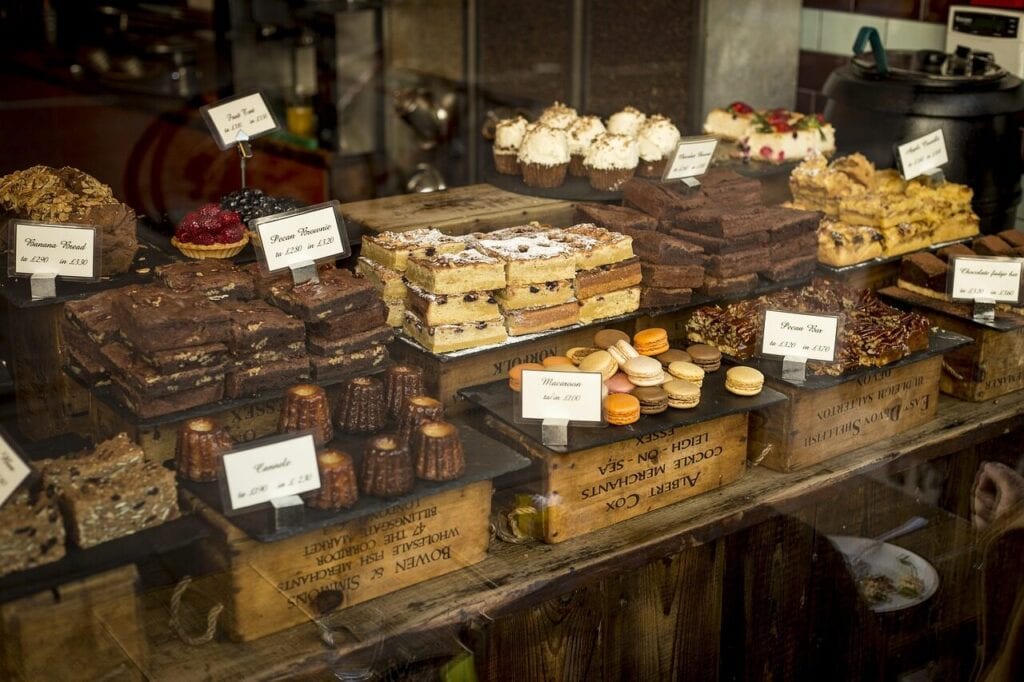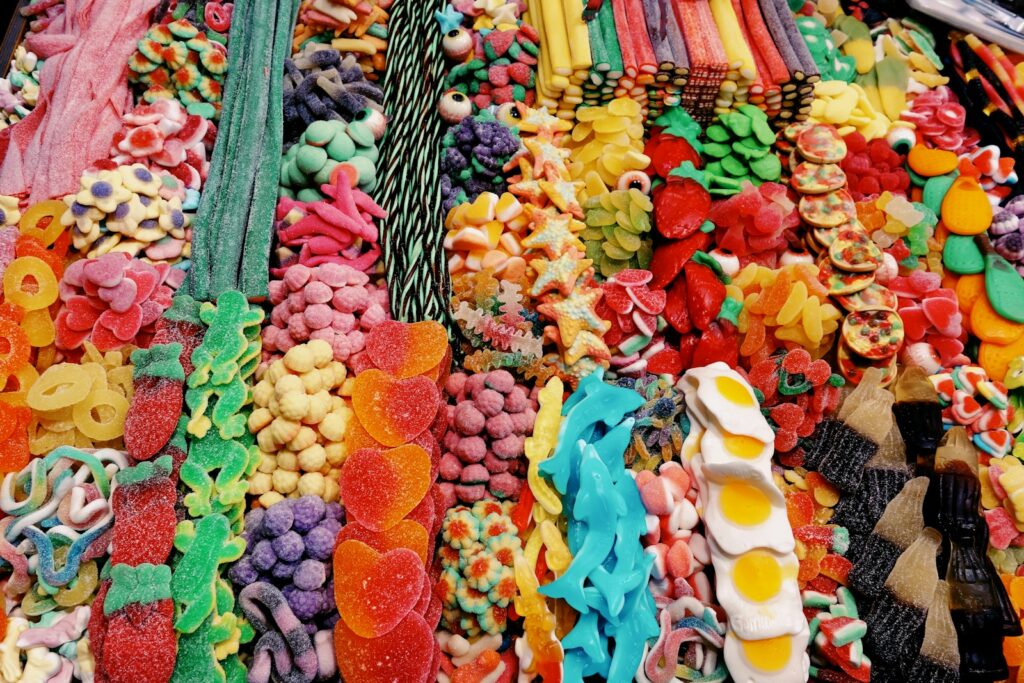Deconstructed: Science Behind Cola Gummies
Ever wonder what makes a cola gummy perfectly chewy? Or how it tastes exactly like soda? The answer goes way beyond a simple ingredient list. It’s a carefully planned process based on chemistry and engineering.
This article breaks down the iconic cola gummy. We’ll explore the complex science behind its structure and the chemistry that creates its flavor. We’ll also look at the technology that brings it to life. We’ll go from basic parts to the complex mix of ingredients and processes.
Come with us as we study the science of texture and the art of flavor chemistry. We’ll also examine the precise manufacturing process. By the end, you’ll see this simple candy as an amazing piece of food engineering.
Anatomy of a Cola Gummy
To understand the final product, we need to break down its basic building blocks. Each ingredient has a specific job. They contribute to the gummy’s structure, sweetness, tang, and flavor.
The Gelling Agent Backbone
The chewy texture of a cola gummy comes from its gelling agent. This is usually gelatin. Gelatin is a protein that comes from animal collagen.
We measure its effectiveness by bloom strength. This tells us how rigid the gel will be. For the firm, elastic texture of a classic gummy, makers typically use gelatin with a bloom strength of 220-250g.
Gelatin is standard, but vegetarian options exist. Pectin comes from fruit and creates a shorter, cleaner bite. Carrageenan from seaweed makes a softer gel. Each gives a different texture experience.
Property | Gelatin | Pectin |
Origin | Animal Protein (Collagen) | Plant Polysaccharide (Fruit) |
Texture | Elastic, Chewy, Melts at body temp | Short, Brittle, “Clean break” |
Gelling | Requires cooling | Requires sugar, acid, and heat |
Flavor Release | Slower, melts in mouth | Faster, due to brittle structure |
The Sweetener System
The sweetness in a cola gummy is more complex than just adding table sugar. A carefully balanced sweetener system is key for both taste and texture.
Glucose syrup, often called corn syrup, is a vital partner to regular sugar. Its main job is to stop crystallization. Without it, the sugar would form large, crunchy crystals. This would ruin the smooth, uniform texture of the gummy.
Other syrups, like invert sugar, may also be included. These act as moisture keepers. They help the gummy stay moist and prevent it from drying out and becoming hard over time.
The Acidulant Blend
The signature tangy bite of a cola gummy comes from a specific mix of acids. The two most important are phosphoric acid and citric acid.
These acids do two things. From a taste perspective, they provide the sharp acidity that cuts through the sweetness. This mimics the taste of cola drinks.
From a technical standpoint, they lower the product’s pH. This acidic environment helps preserve the candy. It stops mold and bacteria from growing, which extends shelf life. We use a blend because phosphoric acid gives a sharper, ‘drier’ acidity like colas. Citric acid adds a brighter, fruitier note.
The Cola Flavor System
The actual “cola” taste is a proprietary flavor system. It’s a complex blend of natural or artificial flavor compounds. It’s designed to copy the familiar drink profile.
The commonly accepted parts of a classic cola flavor include three elements. These are bright citrus oils like orange, lime, and lemon. There are also warm spices like cinnamon and nutmeg. Finally, there’s a creamy base note of vanilla.
This blend of distinct notes creates the multi-layered and recognizable taste we associate with cola.
Engineering the Perfect Chew
The satisfying chewiness of a cola gummy is not an accident. It results from precise control over the chemical and physical changes of gelatin during production. This section explores how we engineer that specific texture.
The Gelatin Gel Network
Creating the gummy’s structure is a three-stage process. It involves the gelatin and the hot sugar syrup.
First is hydration. Dry gelatin granules are mixed with water. They absorb the liquid and swell, much like a sponge. This prepares the protein chains for the next step.
Second is dispersion. The swollen gelatin is added to the hot sugar mixture. The heat melts the gelatin. This causes its tangled protein chains to unwind and spread evenly throughout the liquid mixture.
Third is gelation. As the mixture cools, the spread-out protein chains slowly begin to realign. They twist together into stable, triple-helix structures. These helixes link up, forming a vast three-dimensional network that traps the sugar syrup. This creates the firm, elastic solid we know as a gummy.
The Acidity Challenge
A major technical hurdle in gummy manufacturing is acid hydrolysis. Gelatin protein can break down when exposed to high heat in a low-pH environment. The acids required for cola flavor create exactly these conditions.
If the acid is added too early in the cooking process, it will damage the gelatin. This weakens the gel network and results in a soft, sticky, or even liquid product.
To overcome this, manufacturers use careful process control. The acid blend is typically added as late as possible in the production cycle. This happens just before depositing. This reduces the time the gelatin spends exposed to both high heat and low pH.
In some recipes, buffering agents like sodium citrate may be used. These salts can slightly raise the pH to protect the gelatin from excessive breakdown. They do this without significantly dulling the desired sour taste.
Quantifying the Chew
We can objectively measure and define the texture of a cola gummy. The industry relies on standardized methods to ensure consistency.
Bloom strength is the basic measure of gelatin’s gel-forming ability. It provides a baseline for predicting the final firmness of the gummy.
For a more detailed analysis, we use an instrument for Texture Profile Analysis (TPA). TPA mimics the action of chewing. It provides data on several key attributes that define the eating experience.
These measurements allow product developers to precisely engineer the gummy’s texture. This ensures every batch has the same hardness, springiness, and chewiness that consumers expect.
TPA Parameter | Definition | Consumer Experience |
Hardness | Peak force during the first compression cycle. | The force needed for the initial bite. |
Cohesiveness | Strength of internal bonds making up the gummy. | How well the gummy holds together vs. crumbling. |
Springiness | Rate at which a deformed gummy returns to its original shape. | The “bounciness” felt after the initial bite. |
Chewiness | The energy needed to masticate the gummy for swallowing. | The overall effort required to eat the gummy. |
The Science of Cola Flavor
The “secret formula” for cola flavor is a classic piece of food lore. From a food chemistry perspective, however, it is a well-understood system. It combines aromatic compounds to create a specific sensory profile.
Deconstructing the Formula
While the exact ratios are trade secrets, the basic components of cola flavor are widely known by flavor chemists. The profile is built from several distinct categories of notes.
- Citrus Top Notes: Volatile essential oils, mainly from sweet orange, lime, and lemon, provide the initial bright, fresh aroma.
- Spicy Body: Aromatic compounds from spices like cinnamon, nutmeg, and sometimes coriander form the warm, complex heart of the flavor.
- Sweet, Creamy Base: Vanillin, either from natural vanilla extract or as a nature-identical compound, rounds out the profile. It adds a smooth and sweet finish.
- The “X-Factor”: Historically, kola nut extract was a key ingredient. Today, other trace notes like neroli oil might be used to add a unique floral or bitter complexity.
Flavor Delivery Methods
The compounds that create this flavor can be sourced in different ways. Each has implications for cost, consistency, and labeling.
Natural extracts and essential oils come directly from the physical plant source. Examples include orange peel or cinnamon bark. They are often seen as higher quality but can vary in profile and cost more.
Nature-identical compounds are made in a lab but are chemically identical to their counterparts found in nature. Synthetic vanillin, for example, is identical to the main flavor molecule in a vanilla bean. These are favored for their high purity, stability, and consistent cost.
Flavor Encapsulation
Many of the key flavor compounds in the cola profile are highly volatile. This is especially true for citrus oils. They can easily break down or evaporate when exposed to the high temperatures of the gummy cooking process.
To protect these delicate compounds, manufacturers often use flavor encapsulation. This technology involves coating tiny droplets of flavor oil with a protective layer. This is often a modified starch or maltodextrin.
This shell protects the flavor during cooking and mixing. It then breaks down during chewing, releasing the flavor in the mouth. This creates a more impactful and lasting taste experience, from the first chew to the last.
Industrial Manufacturing Process
Turning the science of ingredients and texture into millions of identical cola gummies requires a highly controlled, large-scale industrial process. This journey from raw materials to a finished product is a feat of food engineering.
Compounding and Cooking
The process begins in large, steam-jacketed kettles. Here, water, sugars, and the hydrated gelatin are precisely measured and mixed together to form a slurry.
This slurry is then cooked to a very specific temperature and solids content. The concentration of solids is measured in degrees Brix using a refractometer. Reaching the target Brix is a critical control point. It dictates the final water activity, texture, and shelf stability of the gummy.
The Starch Mogul System
The heart of gummy production is the starch mogul line. This clever system forms the gummies without conventional molds.
The process involves shallow trays filled with fine, food-grade cornstarch. A master mold, which has the desired bottle shapes, is pressed into the starch. This leaves perfect impressions or cavities.
Next, a depositor with many nozzles moves over the trays. It precisely fills each starch cavity with the hot, liquid gummy slurry. The starch serves two purposes: it holds the liquid gummy in its shape as it begins to set, and it draws a small amount of moisture from the surface. This helps form an initial ‘skin’.
Curing and Maturation
Once deposited, the trays of gummies are moved into climate-controlled “drying rooms.” These rooms are kept at a specific temperature and relative humidity for an extended period. This is typically 24 to 48 hours.
This is not simply a drying stage. We can think of this as a maturation period. During this time, the gelatin gel network fully forms and strengthens. The gummies slowly lose moisture until they reach their final, target texture and chewiness.
Demolding and Finishing
After curing, the trays are transported to a demolding station. The trays are flipped, and the gummies are separated from the starch in a tumbling drum or over a series of vibrating screens.
The starch is then cleaned, dried, and recycled back into the mogul system for the next batch. The now-formed gummies, which have a dull, dusty surface from the starch, move to the final step.
In a large rotating pan, the gummies are lightly coated with a neutral-tasting oil or a blend of waxes, such as carnauba wax. This finishing step prevents the gummies from sticking together in the bag. It also gives them their characteristic glossy, appealing shine.
An Engineered Delight
The humble cola gummy, a staple of candy aisles worldwide, is far more than a simple confection. It is proof of the power of applied food science.
From the molecular dance of gelatin forming a gel network to the precise balance of acids and proprietary flavor compounds, every aspect of its creation is controlled. The industrial process, centered on the starch mogul, transforms these scientific principles into a consistent and beloved product on a massive scale.
The next time you enjoy a cola gummy, you can appreciate the intricate chemistry, physics, and engineering that work together. They deliver that perfect chew and iconic taste. It is a truly engineered delight.
Reference Links:
- Investigation of the influence of pH on the properties and morphology of gelatin hydrogels – Wiley Online Library https://onlinelibrary.wiley.com/doi/full/10.1002/pol.20230141
- Citric acid and heating on gelatin hydrolysis and gelation in confectionery gels – ScienceDirect https://www.sciencedirect.com/science/article/abs/pii/S0268005X2200162X
- Effect of various acids on physicochemical and functional characteristics of gelatin – PMC (NIH) https://pmc.ncbi.nlm.nih.gov/articles/PMC5502050/
- Gelatin – Wikipedia https://en.wikipedia.org/wiki/Gelatin
- Gelatin – ScienceDirect Topics https://www.sciencedirect.com/topics/chemistry/gelatin
- Flavour encapsulation: A comparative analysis of techniques and food applications – Frontiers https://www.frontiersin.org/journals/nutrition/articles/10.3389/fnut.2023.1019211/full
- Flavour encapsulation: Techniques, stability, and food applications – PMC https://pmc.ncbi.nlm.nih.gov/articles/PMC10017510/
- A comprehensive review of starch-based technology for encapsulation of flavor – ScienceDirect https://www.sciencedirect.com/science/article/abs/pii/S0144861724010427
- Encapsulation and delivery of food ingredients using starch based systems – PubMed https://pubmed.ncbi.nlm.nih.gov/28372213/
- Maltodextrin – ScienceDirect Topics https://www.sciencedirect.com/topics/agricultural-and-biological-sciences/maltodextrin


